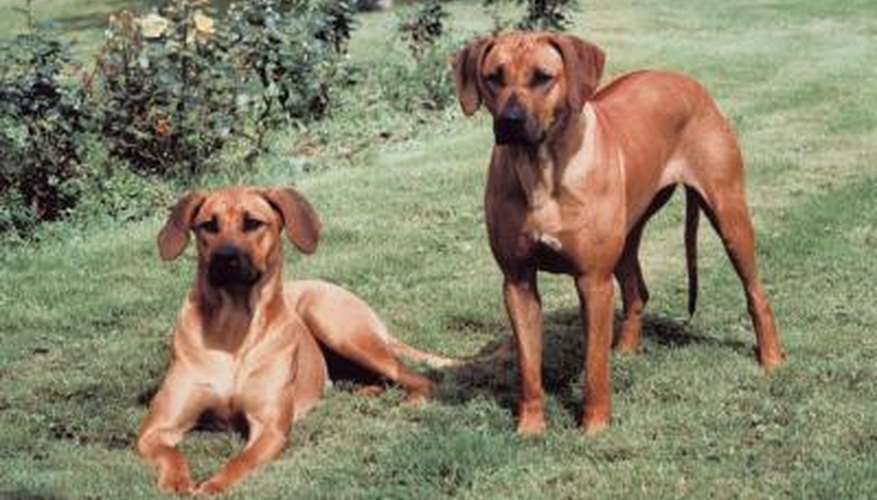The Rhodesian ridgeback dog was developed in Africa to hunt big game. The name describes the narrow ridge of hair, growing in the opposite direction that runs down the spine. With the right care and training, this dog can become a great companion and good canine citizen. Before you bring this big, powerful dog into your home, however, consider the many pros and cons of owning a Rhodesian ridgeback.
Family Needs
The American Kennel Club states that these dogs become quite large at 31.8 to 38.6 Kilogram when mature. Because they are so energetic, they love rough play. Although usually good with children, their sheer size may make them dangerous around toddlers or the elderly, as they can knock them down. The energetic dogs make great companions for young adults and older children. This dog wants to be part of the family, curled next to you on the couch or at your feet. However, it is more aloof with strangers.
- The American Kennel Club states that these dogs become quite large at 31.8 to 38.6 Kilogram when mature.
- Although usually good with children, their sheer size may make them dangerous around toddlers or the elderly, as they can knock them down.
Protection Needs
A Rhodesian ridgeback is independent with a strong prey drive, making it more difficult to train than some breeds. You must provide the dog with a safe place to run and play in a fenced yard. It loves to dig, and one dog can destroy your landscaping or garden. The fence or barrier must be at least 6 feet high to prevent the dog from chasing any small animal that comes near. Once on the trail of a rabbit or the neighbour's cat, nothing will stop this dog, and it is in danger from traffic or from getting lost. If you cannot provide a large fenced yard, consider visiting a nearby dog park a few times a week for exercise. Although the dog prefers to be with you, if left outside, it needs shelter from excessive heat in summer or cold in winter.
- A Rhodesian ridgeback is independent with a strong prey drive, making it more difficult to train than some breeds.
- Once on the trail of a rabbit or the neighbour's cat, nothing will stop this dog, and it is in danger from traffic or from getting lost.
Training
Most Rhodesian ridgebacks do not bark excessively. This is a real advantage in the city or with close neighbours. It will bark at intruders or strangers, alerting you to possible intruders. Ridgebacks are extremely intelligent, making puppies easy to train. With training, ridgebacks can become show dogs, obedience competitors, hunting partners or loving companions. Without the right training however, the ridgeback can be destructive and demanding.
- Most Rhodesian ridgebacks do not bark excessively.
- Without the right training however, the ridgeback can be destructive and demanding.
Health Problems
It is important to obtain your Rhodesian ridgeback puppy from a reputable breeder who will not sell you a dog without divulging possible problems. The breed is susceptible to hip or elbow dysplasia, dermoid sinus and thyroid problems.
Care and Feeding
The Rhodesian ridgeback has short hair and only needs occasional brushing. It sheds very little. This dog is always hungry and will eat anything, including furniture, tree branches and plants in your garden. This dog will clear your counters of any food left out. You must feed the dog on schedule to prevent overeating, stomach upsets and weight gain.
- The Rhodesian ridgeback has short hair and only needs occasional brushing.
- This dog is always hungry and will eat anything, including furniture, tree branches and plants in your garden.
